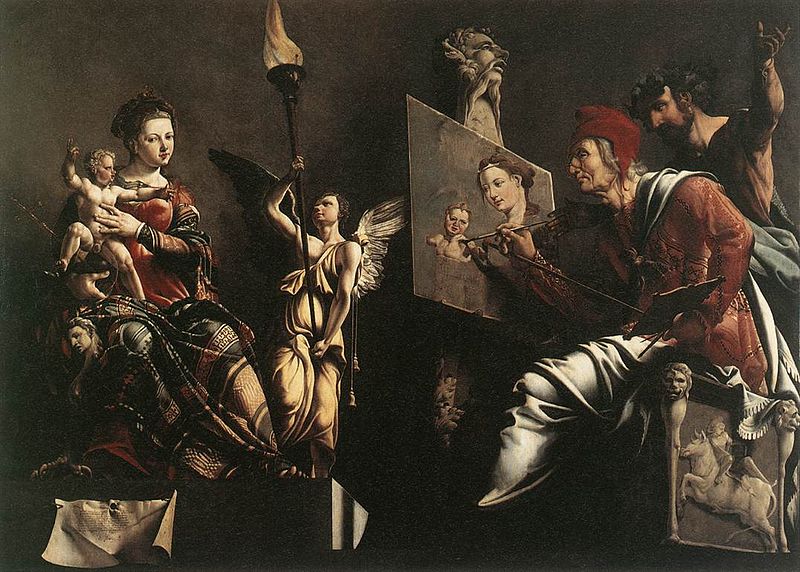* * * *
October 29, 2023 – Halloween isn’t just day. (This year coming this Tuesday.) It’s actually one of “three days of Hallowe’en.” More precisely, October 31 is the first of the Halloween Triduum. It’s also called Allhallowtide, and Triduum is just a fancy Latin word for “three days.”

According to Wikipedia, this triduum is a time to remember the “dear departed.” And not just martyrs and saints, but all faithful departed Christians. The main day of the three is November 1, now called “All Saints Day.” It used to be called Hallowmas, and was established some time between 731 and 741 – over 1,300 years ago – “perhaps by Pope Gregory III.” Hallowe’en – literally the “Eve of All Hallow’s” – started with an old-time idea that evil spirits were strongest during the long nights of winter. And that the “barriers between our world and the spirit world” were at their most permeable – the barrier was lowest – on the night of October 31. And by the way, the term “Hallowe’en” developed from the Old English word for “saint,” halig.
Which brings up the masks and costumes that are a big part of Halloween. In the old days – when people thought the barrier between this world and the next was at its lowest – people wore masks or costumes to disguise their identities. The idea was to keep the ghosts or spirits – coming from the netherworld world – “from recognizing live people in this ‘material world.’”
The same is true of bonfires. Literally bonefires, fires where bones were burned. One idea behind that? Evil spirits could be driven away with noise and fire. Also, old-timers thought the fires brought comfort to “souls in purgatory and people prayed for them as they held burning straw up high.” And in Merry Old England there were three types of bonfire:
…one with only clean bones (“bonys”) and no wood called a “bonnefyre”, one with clean wood and no bones called a “wakefyre”, and the third with both bones and wood, called “Saynt Ionys Fyre”. Apparently the original [custom] fell into “lechery and gluttony”, so the church deemed it instead as a fast.
Of course there are other types of bonfire as well, not falling into lechery and gluttony. For example, garden bonfires which – if done right – are a “useful source of potash and may be beneficial in improving the soil structure of some soils.” (While “managed with safety in mind.”)
The day after Halloween, November 1, is All Saints Day. It honors “all the saints and martyrs, both known and unknown.” A saint is defined as one “having an exceptional degree of holiness,” while a martyr is someone “killed because of their testimony of Jesus.” But actually, we should distinguish “Saints,” with a capital “s” from those with a lower-case “s.” Briefly, all living Christians are called to be saints, with a small “s.” A Saint with a capital “s” is usually one who has passed on. (But that too is “another whole can of worms.*)
Be that as it may, November 2 – All Souls’ Day – honors “all faithful Christians … unknown in the wider fellowship of the church, especially family members and friends.’” Observant Christians typically remember deceased relatives on the day, and – in many churches – the service on the following Sunday includes a memorial for all who died in the past year.
With all that in mind: “Have a Happy Halloween Triduum!”
* * * *

* * * *
The upper image is courtesy of Sheol: The Grave or so Much More? – The Israel Bible. An interesting article, citing (for example) Psalm 89:49, or 89:48 in the Bible Hub translation. In the ESV, “What man can live and never see death? Who can deliver his soul from the power of Sheol?” Or in the NLT, “No one can live forever; all will die. No one can escape the power of the grave.” (You get the point.) I was looking for an image I’ve never used before to put in this latest Halloween post, and found the Sheol article. Good, but it opens up a whole new can of worms: Described as the opposite of heaven, Sheol is “a place to reluctantly pass time after dying,” and where the person has “no memory of his life nor the ability to praise God.” Sounds like Hell to me, but like I said, “a whole new can of worms.” (Meaning I’ll have to address the question – Is this just another word for Netherworld? – in a future post.) “Which [also] brings up the topic of rabbit trails.” See the lower part of the text in On Eastertide – and “artistic license,” from 2016. All this stuff on Sheol was definitely a “rabbit trail.”
The Book of Common Prayer reference. The “corporate-mystical” prayer is on page 339, the post-communion prayer for Holy Eucharist, Rite I.
I based this post on past posts including: The Halloween Triduum – 2019, On Halloween 2020 – “Scariest ever,” On the Hallowe’en “Triduum” – 2021, On Halloween 2022 – and a “Samaritan” update, and Between Halloween and Thanksgiving – 2022.
On “Saints” versus “saints.” See What are Christian saints according to the Bible: “All Christians are considered saints. All Christians are saints – and at the same time are called to be saints.” Also Saints, big and small – U.S. Catholic, and Saints with a Capital S – Covenant. See also the note above on rabbit trails and “whole new cans of worms.”
The lower image is courtesy of All Souls Day Image – Image Results.
* * * *

